The tree that predates humankind and a prominent figure found even on Pangea, over 200 million years ago. It stands as a symbol of Africa and lays at the heart of many African cultures, traditional stories, and natural remedies.
Reaching up to 5000 years old, these ancient beauties are both weird and wonderful. With their upside-down looking appearance and enchanting, yet ephemeral flowers. The blossoming only occurs during the full moon, making it even more magical.
Nothing seems more iconic than the silhouette of a baobab cast along the plains of an African sunset. But it’s not only the enormous size that gains all the attention.
Baobabs provide food, shelter, and water to both humans and animals. Which is why it plays such a significant role in many African ecosystems. Let’s take a closer look at the magnificent role the African tree of life plays, and what makes this elegant tree so special.
Where to Find the Baobab Tree
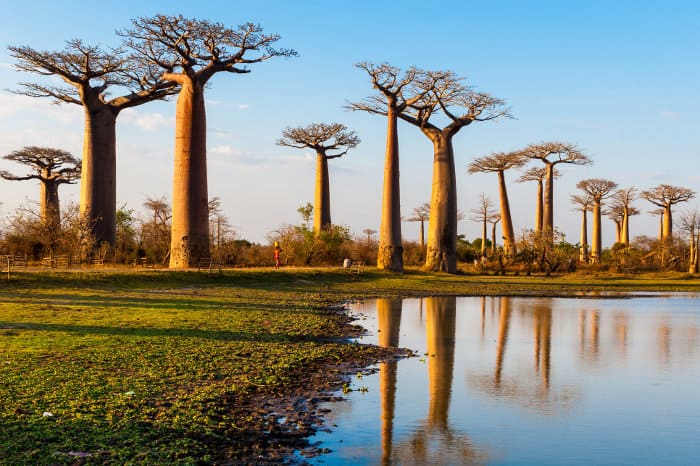
The Baobabs grow in the arid regions of Madagascar, Arabia, and Australia. Although most prominent throughout mainland Africa.
Right here in the heart of Africa, the largest and oldest of the Baobab species spend their lives. Adansonia digitata is an African gene and one of the most widespread of the species. Dominating the landscapes of over 35 countries.
They’re scientific wonders towering over the skylines in the Kruger National Park and Mapungubwe. As well as the grasslands of Senegal and the Arabian peninsula, to name a few populous areas.
How the Upside-Down Baobab Trees Got Their Name
It’s a given that this is a pretty strange looking tree. When the leaves aren’t baring, the branches twist and spread in the air, looking identical to tree roots. It’s almost as if the tree is completely growing upside down.
Legend has it that the god Thora wasn’t too happy with baobabs growing in his magnificent garden. Instead of loving and tending to the tree, he threw it over the Wall of Paradise and onto earth it fell.
Another tale goes that the baobabs had too strong a sense of adventure. That they were always walking around, wandering from continent to continent. God had to intervene by pulling the roots out and flipping the tree upside, to keep it safely in one place.
African Trees of Life
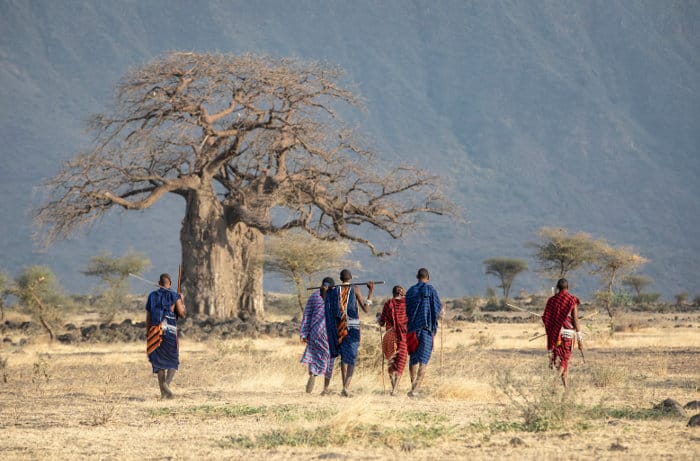
Sticking to the scientific name Adansonia digitata isn’t a problem. Although the life-saving abilities and incredible uses of this tree mean that it more than happily deserves the name ‘tree of life’.
The African tree can hold up to hundreds of liters of water, which proves to be an incredible adaptation to the harsh environments they reside in.
When times are hard, the baobab stands as a symbol of positivity and resilience. The tree forms an integral part of the livelihood of many African villages.
Often communities will gather under the tall trunks to meet with the chiefs to resolve personal conflicts. As well as tackle the challenges the community is facing.
The Baobab Facing Extinction
Yet again, our world faces another threat due to fluctuating temperatures. Ancient as they are, the baobab trees fall victim to environmental change. Nine of the 13 oldest baobabs, outstandingly aged between 1,100 and 2,500 years, have died.
The baobabs began to rapidly die off as a result that wasn’t quite so easy to identify by scientists. Researchers speculated as to whether diseases or pests could have had such a drastic effect on these ancient old species. It seems more likely that rising temperatures are to blame.
Yes, the climate is changing, but it’s not to say that the rise in temperature has been a direct killer of the trees. More so, the higher temperatures and lack of rain have caused the trees to become weaker and more susceptible to disease and illness.
But this remarkable species doesn’t plan on becoming extinct just yet. It has still got plenty of magic to bless the world with.
The Baobab Sustaining Our Ecosystem
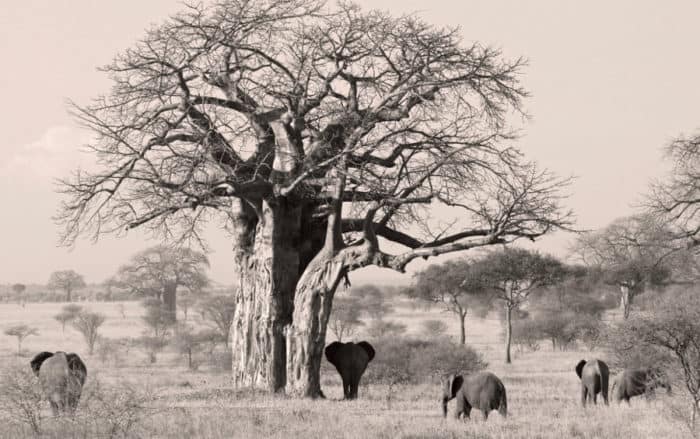
It’s as if the Baobab is running its own ecosystem, within its branches. Troops of monkeys hang from the branches and feast on the fruits. They then rest on the branches for their afternoon naps. African elephant trunks sniffing in the branches in search of the perfect fruit join the sleeping monkeys.
Come evening time and fruit bats have their chance to pollinate the scarce flowers. Blooming only during the changing colors of nighttime. While also serving as the tree’s main pollinators.
Birds find comfort nesting in the tall trunks, tucked safely away from the dangers found in smaller trees.
When times are harsh and rain hasn’t fallen for months, giraffes and elephants rely on the nutrient-rich, dense bark of the baobabs. The water-saving properties of the baobab help store water during the harshest seasons.
Animals will actually use the hollow branches of the trees as straws, to simply suck up the water and quench their great thirst.
The Tree of Many Uses
In addition to being commonly sought out for timber, the upside-down tree has an unbelievable number of uses.
The baobabs useful trunk
Hollow the tree out and it’s even more useful to humans. The trunks provide basic shelter, a space to store grain and are even able to store water supplies. And wildly enough, the hollow insides act as burial sites, too.
Their unique, cork-like bark and enormous stem are fire-resistant, making it the ideal material for clothing and rope. Grind the bark up and the powder has the power to flavor meals with extra nutrients.
The vitamin-rich baobab fruit
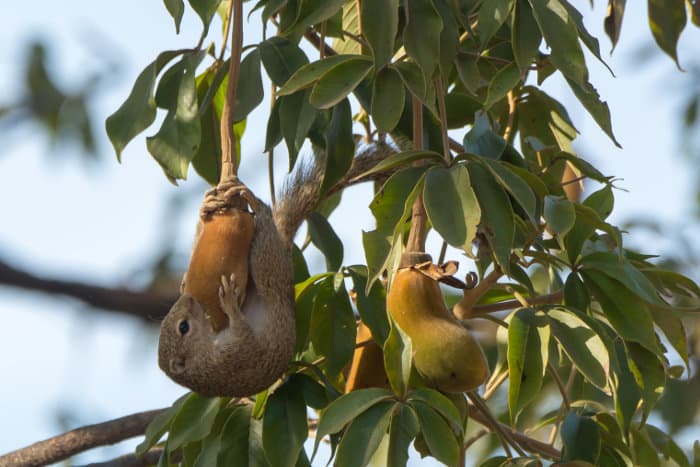
If the elephants happen to miss the incredible fruit hanging from the treetops, the fruits and seeds are also edible for humans. With its velvety skin and coconut-like flesh, the baobab fruit boasts incredible benefits.
Producing even more vitamin C than oranges, the fruit helps sustain a healthy immune system for the locals. Unlike many animals, humans can’t produce their own vitamin C. And that’s what the baobab fruit plays an enormous role in.
Playing a part in the community
It doesn’t stop there. The tall crowns of the treetops shade the grounds below providing an escape from the scorching African sun. And the community takes full advantage of the shade. Many towns and rural villages hold markets near the trees to protect and shade themselves.
Not only does the tree have physical properties to share with the world. The trees also hold cultural importance. They form a big part of the cultural lives of many African communities. And often they are the main center points to stories told around the fire from one generation to the next.
Baobab Fruits and Their Astounding Health Benefits

The baobab fruit goes largely unnoticed, even though it’s one of the most nutrient-dense fruits found on earth. It’s an exceptional superfood and provides a wide range of health benefits:
- Supports the immune system: It aids in protecting the body against disease, illness, and infections.
- Digestive health: The fruit is a natural probiotic, and an essential element of a healthy gut. Aduna baobab powder is a whopping 50% fiber, which also helps reduce high levels of cholesterol.
- Energy machines: The fruit helps prevent fatigue and gets the blood flowing. Something even animals need at times.
- Radiant skin: The fruits are rich in antioxidants, boosting up collagen production.
- Slows down the release of sugar: Given its high fiber content, it can slow the release of sugar.
The Baobabs Ephemeral Blossoms
Seeing the baobab bloom can be one of the most special African experiences.
Incredibly, the blooming of the baobabs starts during the trees late teen years and early adulthood. At the start of the rainy season, the upside roots will begin to grow a fresh set of leaves. Along with flower buds waiting for their chance to enchant the night.
As the sun starts setting and the magnificent colors of reds and oranges mask the African sky, the baobab will put on a show of its own. But come morning, the flowers have already begun to magically disappear.
The bisexual baobab flowers will stay open at night to attract the night time critters. Fruit bats, bushbabies, and nocturnal insects are in for a feast.
The unique rhythm of the flowers
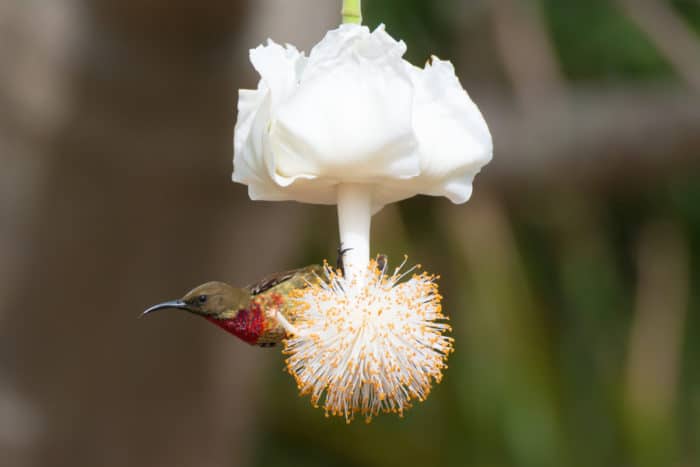
Large old baobabs can carry hundreds of flowers, each following their own rhythm of blossoming. Some opening one-night together, and the next batch opening days later. Some even open for 30 seconds, while others open for a couple of hours.
Nevertheless, it’s entirely worth taking a chance to catch a glimpse of these large, creamy white flowers.
Even though it’s incredibly rare to witness this spectacle, there is some good news. The trees display their blossoms across a variety of countries on the African continent.
The Enchanting African Trees
The African baobab tree is the oldest flowering tree. It holds nutrient-rich fruit, bark, and water supply to ensure the survival of its surrounding home.
The strange-looking plant is a highly valued part of Africa. The loss of its species can be detrimental to communities, animals, humans and the tiniest of insects.
It’s important that we respect these magnificent, enigmatic trees that provide so much for us all. Next time you come across these giant trees, take a moment to appreciate the good the tree does. Maybe you’ll get lucky and come across some of the sporadic flowers.
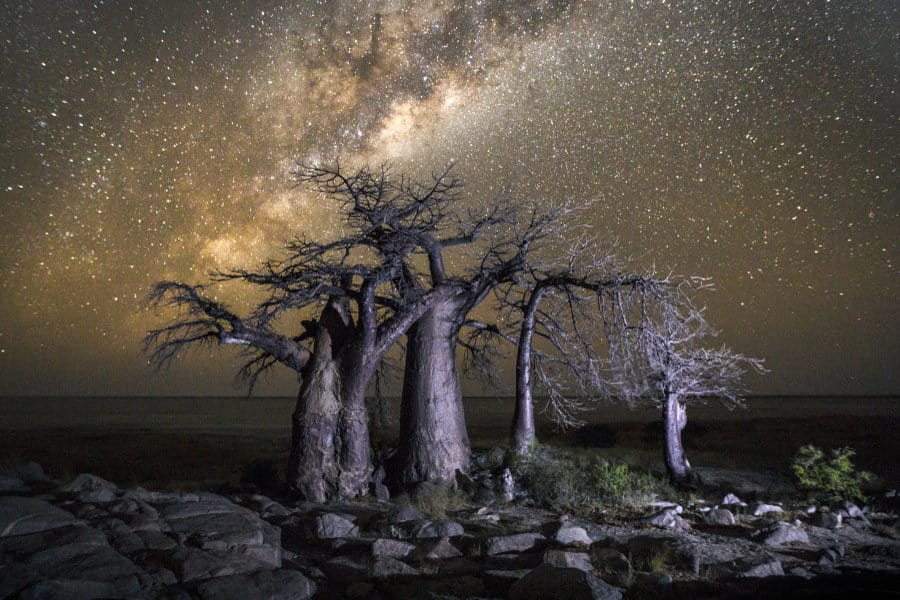

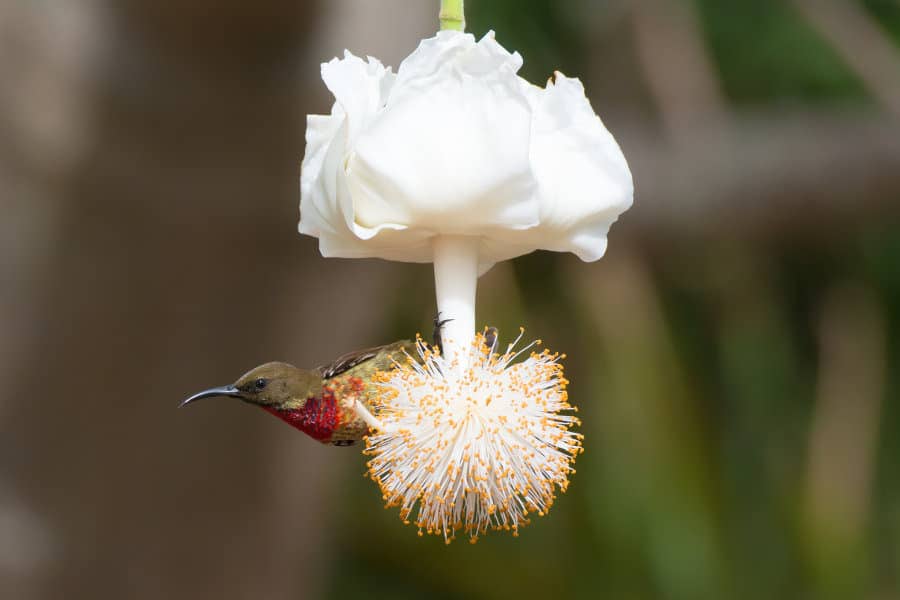
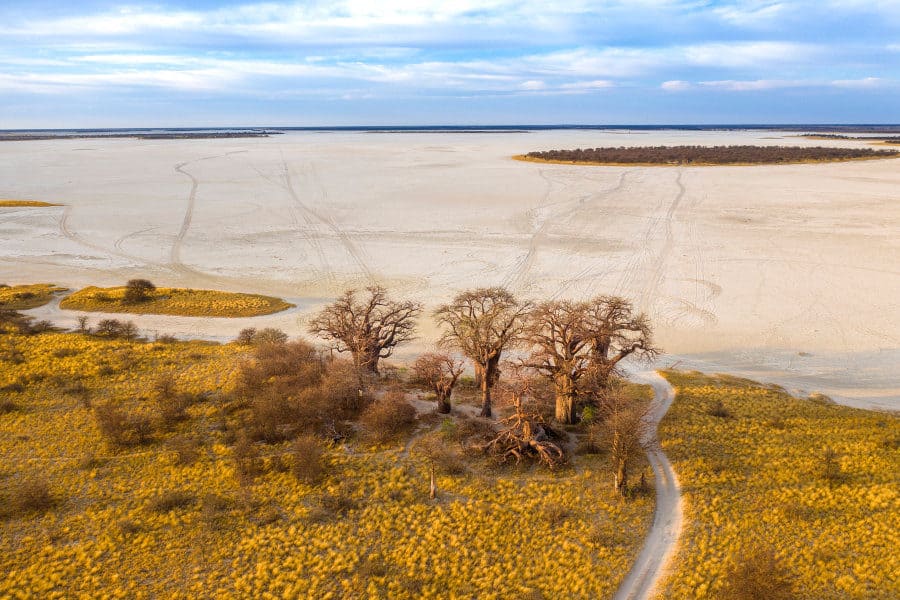
What an interesting article. I had heard of the marvellous Baobab tree, but never knowingly saw one when I was in Africa. Let’s hope the trees don’t suffer from the nasty things we humans are doing to the world, today. It could be saviours to us all. Bravo to the Baobab, may it be here forever to keep the world alive…